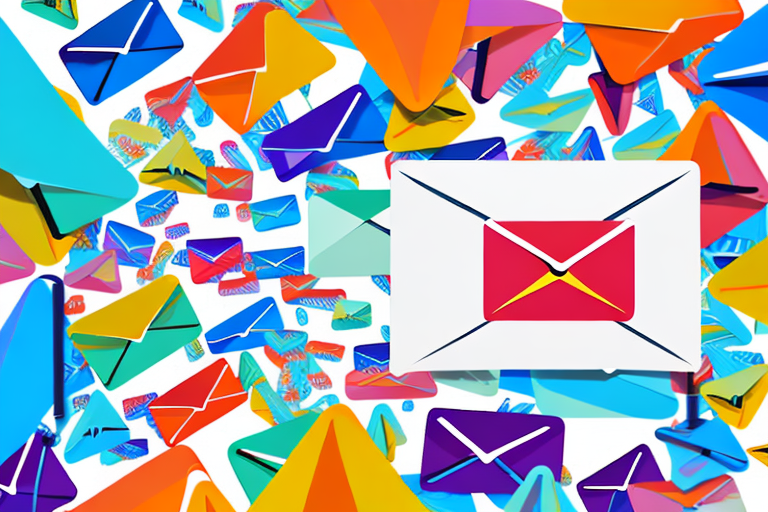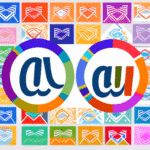How to Create Successful Email Marketing Campaigns
Email marketing remains a powerful tool for reaching your target audience and achieving your business objectives. To create effective email campaigns, it’s essential to understand the key components of a successful strategy. This guide delves into the importance of email marketing, setting goals, identifying your target audience, building a compelling email list, crafting effective subject lines, designing eye-catching emails, adding personalization, segmenting your email list, timing your emails for optimal impact, A/B testing, analyzing email metrics, best practices for building an effective strategy, and essential tools and resources. Additionally, we will highlight common mistakes to avoid when launching email marketing campaigns.
Understanding the Importance of Email Marketing
Email marketing remains one of the most cost-effective and measurable ways to engage with your target audience. According to Statista, businesses earn an average of $42 for every $1 spent on email marketing, highlighting its impressive ROI. Email marketing allows for customization and personalization, fostering trust and strong relationships with prospects and customers. By creating targeted email campaigns, businesses can enhance engagement, increase conversions, and generate more leads compared to traditional marketing methods.
Moreover, email marketing provides valuable insights into your audience’s behavior and preferences. By analyzing metrics such as open rates, click-through rates, and conversion rates, businesses can better understand what resonates with their audience and adjust their strategies accordingly. Segmentation based on demographics, interests, and behaviors enables the delivery of targeted and relevant messages to specific groups, enhancing the effectiveness of campaigns.
Setting Goals for Your Email Marketing Campaigns
Establishing clear objectives is a foundational step in your email marketing strategy. Defined goals help you create relevant and informative content tailored to your audience, ultimately boosting your business performance. Common goals include:
- Increasing sales
- Driving traffic to your website
- Generating leads
- Improving customer loyalty and retention
Regularly evaluating and adjusting your goals is crucial as your business and audience evolve. Analyze campaign metrics such as open rates, click-through rates, and conversion rates to determine what is effective and what needs improvement. Staying updated with industry trends and best practices also aids in setting realistic and impactful goals for your email marketing campaigns.
Identifying Your Target Audience
Knowing your target audience is paramount for creating effective email campaigns. Understanding your audience’s demographics, interests, pain points, and behavior patterns allows you to develop personalized and relevant content that resonates with them. Begin by segmenting your email list based on buyer personas or customer segments to deliver targeted campaigns that are more likely to convert.
Gather information about your target audience through surveys, feedback forms, and analytics tools. For example, Pew Research Center offers valuable insights into consumer behavior and preferences. Analyzing data from your website and social media channels can help you create more targeted and effective email campaigns that address your audience’s specific interests and challenges.
Creating an Engaging Email List
Your email list is the cornerstone of your email marketing efforts. A high-quality, engaged subscriber list ensures that your campaigns yield meaningful results. Collect email addresses ethically through opt-ins, contests, or offering free resources. Regularly monitor your email list and remove inactive or invalid contacts to maintain high engagement rates.
Personalizing your emails by using subscribers’ names and tailoring content to their interests enhances engagement. Providing consistent, valuable content is also essential. Share industry news, tips, and exclusive offers to keep your subscribers interested and encourage them to stay subscribed.
Crafting a Compelling Subject Line
The subject line is the first thing subscribers see, making it crucial for driving open rates. Effective subject lines should be short, catchy, and personalized, offering a clear value proposition that reflects the email’s content. Avoid spammy keywords, excessive punctuation, and all-caps text, which can trigger spam filters and reduce open rates.
Understanding your audience’s interests and preferences allows you to create subject lines that resonate and encourage opens. Personalization techniques, such as including the recipient’s name or location, can make subject lines more engaging. Regularly testing and optimizing subject lines through A/B testing can help determine which versions perform best, ultimately improving your open rates over time.
For more insights on creating effective subject lines, refer to Mailchimp’s guide on email subject lines.
Designing Eye-Catching Emails to Grab Attention
The design of your email should be visually appealing and aligned with your brand identity. Utilize images, infographics, and videos to enhance interest and break up text. Ensuring your email is mobile-responsive is essential, as a significant portion of emails are viewed on mobile devices.
Clear calls-to-action (CTAs) are vital for guiding subscribers toward your conversion goals. Personalizing content by using the subscriber’s name and other relevant information makes the email feel more personal and engaging. Additionally, tailoring content to different segments of your email list based on their interests and preferences increases relevance and effectiveness.
Compelling subject lines complement the email design by enticing subscribers to open and engage with the content. Use action-oriented language and create a sense of urgency to encourage subscribers to take action.
Adding Personalization to Your Email Campaigns
Personalization fosters a deeper connection with your subscribers and builds trust. Simple personalization, such as using the subscriber’s name, can significantly enhance engagement. Advanced personalization includes sending targeted and segmented emails, renewal reminders, or anniversary emails, and providing personalized product recommendations or location-specific promotions.
Dynamic content, which adjusts based on the subscriber’s behavior or preferences, can further personalize your emails. For example, recommending products based on previous purchases can increase the likelihood of repeat purchases.
However, it’s important to use personalization strategically to avoid overwhelming subscribers. Over-personalization can come across as invasive. Continuously test and analyze the effectiveness of your personalization tactics to ensure they resonate with your audience.
Segmenting Your Email List for Better Results
Segmentation is key to delivering the right message to the right audience at the right time. By dividing your email list into specific groups based on characteristics, behaviors, or preferences, you can tailor your content to meet the unique needs of each segment. This targeted approach can lead to higher conversion rates, reduced unsubscribe rates, and sustained subscriber engagement.
Common segmentation criteria include:
- Demographics: Age, gender, location, income
- Behavior: Purchase history, email engagement levels
- Interests: Preferences indicated through surveys or browsing behavior
For example, targeting highly engaged subscribers with exclusive content or promotions can further enhance their loyalty and encourage them to share your emails with others.
Timing is Everything: When to Send Emails for Optimal Results
The timing of your email campaigns significantly impacts their success. Sending emails at the right time ensures they reach subscribers when they are most likely to engage, maximizing open rates, click-through rates, and conversions. Conduct A/B testing by sending emails at different times to determine the optimal send time for your audience.
Consider the following when determining send times:
- Audience Behavior: Analyze when your subscribers are most active. For B2B audiences, weekdays during business hours might be ideal, while B2C audiences might engage more during evenings and weekends.
- Email Type: Promotional emails might perform better during workdays, whereas newsletters could be more effective on weekends when subscribers have more leisure time to read.
Utilize tools like HubSpot or Mailchimp’s Send Time Optimization to analyze and determine the best times to send your emails based on historical data.
A/B Testing Your Emails for Maximum Impact
A/B testing, or split testing, involves comparing two versions of an email to see which one performs better. By testing different elements such as subject lines, email content, images, calls-to-action, and send times, you can identify what resonates most with your audience.
Steps for effective A/B testing:
- Identify the element you want to test (e.g., subject line).
- Create two variations (A and B) differing only in the selected element.
- Send each version to a small, representative segment of your email list.
- Analyze the results based on predefined metrics (e.g., open rates).
- Implement the winning version to the rest of your list.
Continuous experimentation and optimization through A/B testing can help refine your email strategies, leading to improved performance and business results. For more on A/B testing, refer to Optimizely’s guide on A/B testing.
Analyzing Your Email Marketing Metrics for Success
Measuring and analyzing your email marketing metrics is essential for evaluating and optimizing campaign performance. Key metrics to monitor include:
- Open Rates: Percentage of recipients who open your email.
- Click-Through Rates (CTR): Percentage of recipients who click on links within your email.
- Conversion Rates: Percentage of recipients who complete a desired action after clicking through.
- Unsubscribe Rates: Percentage of recipients who opt out of your email list.
- Return on Investment (ROI): Revenue generated compared to the cost of your email campaigns.
Utilize email marketing analytics tools like Google Analytics, Mailchimp Reports, or HubSpot Email Analytics to gain insights into your campaign performance. Understanding these metrics allows you to identify areas for improvement and make data-driven decisions to refine your email marketing strategy.
Best Practices for Building an Effective Email Campaign Strategy
Creating successful email campaigns requires thoughtful planning and execution. Adhering to best practices ensures that your campaigns are effective and drive desired results. Key best practices include:
- Consistency: Maintain a consistent design and tone in your emails to reinforce your brand identity.
- Clear Goals and KPIs: Define clear objectives and key performance indicators to measure success.
- Personalization: Tailor your emails to individual subscribers to increase relevance and engagement.
- Automation: Use automation tools to send timely and relevant emails based on subscriber behavior.
- Segmentation: Divide your email list into targeted segments to deliver more personalized content.
Following these best practices helps enhance your email campaigns, improve engagement metrics, and drive better business outcomes. For more comprehensive strategies, refer to Campaign Monitor’s Email Marketing Strategy Guide.
Tools and Resources to Enhance Your Email Marketing Efforts
Numerous tools and resources are available to streamline your email marketing efforts and enhance campaign performance. Essential tools include:
- Email Automation Platforms: Tools like ActiveCampaign and Mailchimp automate email campaigns based on subscriber behavior.
- Email Design Software: Platforms such as Canva and BEE help create visually appealing emails.
- Opt-In Form Builders: Tools like OptinMonster and Sumo facilitate the creation of effective opt-in forms.
- Email Marketing Analytics: Platforms such as Google Analytics and HubSpot provide detailed insights into campaign performance.
- A/B Testing Tools: Tools like Optimizely and Mailchimp A/B Testing enable effective experimentation with different email elements.
Leveraging these tools can help you manage your campaigns more efficiently, improve engagement metrics, and grow your subscriber list effectively.
Common Mistakes to Avoid in Email Marketing Campaigns
While email marketing is a powerful tool, certain mistakes can hinder your campaign’s success. Avoid the following common pitfalls:
- Buying or Renting Email Lists: Use only organically grown lists to ensure higher engagement and compliance with regulations like GDPR.
- Sending Emails Too Frequently: Bombarding subscribers with too many emails can lead to higher unsubscribe rates.
- Using Large Images: Excessive or large images can slow down email loading times and frustrate subscribers.
- Low-Quality or Irrelevant Content: Ensure your content is valuable and relevant to maintain subscriber interest.
- Failing to Segment: Sending generic emails to all subscribers can reduce relevance and engagement.
Additionally, regularly monitor your email metrics and be prepared to adjust your strategy based on the insights gained. Avoiding these common mistakes can significantly enhance the effectiveness of your email marketing campaigns.
By adhering to best practices, utilizing the right tools, and avoiding common pitfalls, businesses can create successful email marketing campaigns that drive results and meet their business objectives. Remember, email marketing is both an art and a science, capable of significantly impacting your marketing efforts and business growth when executed correctly.




















